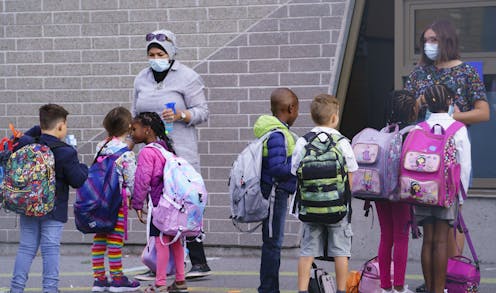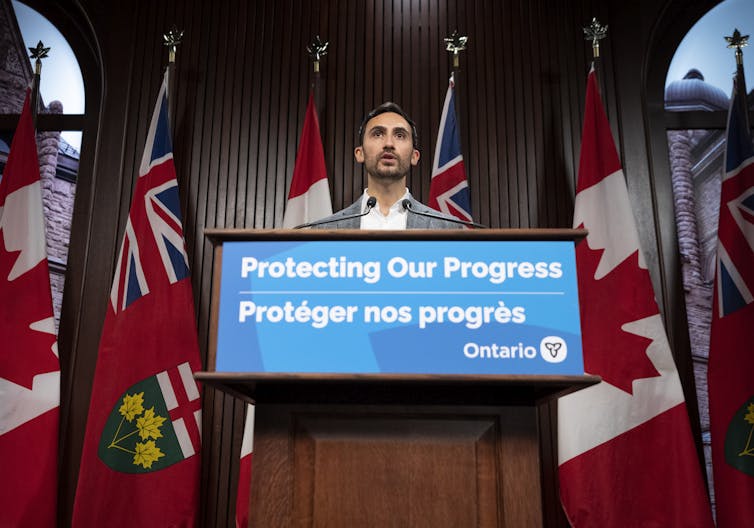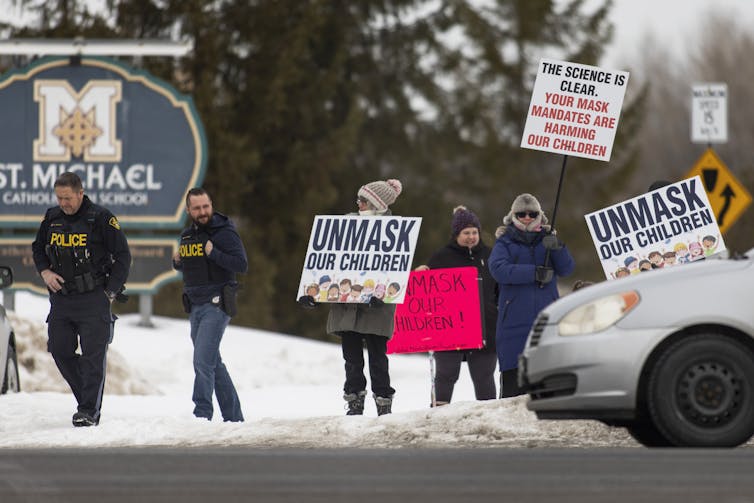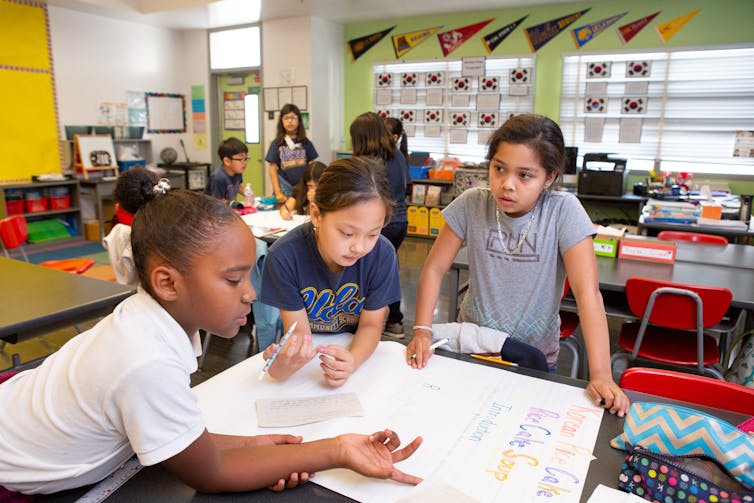
A survey of Ontario principals about COVID-19 challenges and specific school issues like technology found that in the pandemic principals were hearing “about province-wide education policy decisions at the same time as the public received news.” This “did not support schools in navigating the rapidly changing pandemic landscape.”
The 2020-21 report on Ontario schools was compiled by People for Education, a charitable organization that supports public education rough research, policy and public engagement. More than 1,000 principals (1,173) participated in a fall 2020 survey; 209 principals completed a spring 2021 follow-up survey, and 20 principals were interviewed June 2021.
Principals often found themselves responding to community queries and questions without all of the information.
The pandemic represents a rift, and our society has opportunities to re-create and re-imagine.

Shifting leadership
Alma Harris and Michelle Jones, who study school leadership, highlight the demanding and chaotic circumstances in which principals find themselves today and suggest school leadership practices have been changed as a result of COVID-19.
In the People for Education survey, Ontario principals describe their own leadership as being pushed to the limit, making many tasks insurmountable. They call for greater collaboration between themselves, school-based staff, central school board leaders and the Ministry of Education.
Key recommendations emerging from the survey were for the Ministry of Education to give advance communication about province-wide policy decisions, to consult stakeholders with on-the-ground experience in schools, to fund additional staffing and to broaden access to technology.
Shifting roles of principals
In the pandemic, principals had to become pseudo medical professionals, making decisions around COVID-19 symptoms while juggling staff and student absences and COVID-19 operational infractions, all while ensuring that schools remained productive places of learning.
They had to navigate unpredictability and the politicization COVID-19 brought to many communities as some parents resisted pandemic guidelines. Principals were constantly communicating to dispel misinformation in a time when messaging changed almost daily.

Principals were sometimes COVID-19 contact tracers, screeners and translators of rapidly changing government policies.
Top-down responses
Managing chaotic moments and processes consumed the role. Top-down, bureaucratic responses to the pandemic did not provide room for decisions to be made on the ground by principals who know their communities.
The problem is principals are currently faced with outdated, bureaucratic and frankly oppressive practices, which make it difficult to effectively serve their students. For example, during the most recent pivot to online learning, the Globe and Mail reported on a shortage of devices for families.
Not every family has access to a device at home and many schools simply did not have enough to hand out. With only a couple of days to pivot to online learning, and facing limited resources and a slowed centralized response, many families went without a device for days.
Yet principals across the province created innovative responses to the challenges the pandemic posed. Their resilience and courage enabled them to do more than just survive the pandemic, but to embrace the challenges it brought and create change that benefitted both staff and students. We need to hear more about these stories of principal leadership dedicated to serving and empowering school communities.
Addressing systemic inequities
The opportunities these moments present become significant when we consider the diverse identities and lived experiences of students — as well as the inequitable distribution of resources in our schools.
Equity and justice educator Paul Gorski writes of the need for educators to engage what he calls “equity literacy” — for educators to be able to engage the knowledge and skills needed to be anti-oppressive and to ask themselves if they are actually engaging culturally proficient practices or simply performing them.
For example, anti-Black racism persists and has been embedded within our systems, our practices and thinking around education. Leaders have the opportunity to either uphold this oppression or actively disrupt it.
Read more: Schools after coronavirus: Seize 'teachable moments' about racism and inequities
From time to time, we hear people express a desire to “return to normal” in education. But we cannot cling to the past in search of the norm as this is where the problems originate.

Read more: 'School choice' policies are associated with increased separation of students by social class
Anti-racist scholar Vidya Shah notes that longstanding inequities were heightened during the pandemic. The pandemic showed “growing gaps between the ability of private and public schools to support the safety and well-being of children,” as well as “massive inequities with regards to student access to technology and Wi-Fi,” and disproportionate effects of COVID-19 on racialized and low-income communities.
Shah imagines new possibilities for schools in which every child and family as well as their lived experiences are valued and honoured within a caring and supportive community, and relationships between the school and families are strong and meaningful.
Envisioning a new role for principals
Principals can play a key role in creating such a vision. The potential for change lies in a vision of principalship around the concept of socially just, activist leadership.
David Edward deMatthews and Rebecca Tarlau, researchers in educational leadership, find that socially just or activist principals are visible in schools and the community and take concrete steps to have informed understanding of their school contexts and lived experiences in their community.
This includes understanding the political context or confronting injustice. Principals must strategize to find ways to align school goals with system priorities, even when there may be misalignment.
I wonder how different the pandemic response might have been had principals been provided with the resources and decision-making abilities they need to serve their communities. The time has come for activist and socially just leadership.
Kenneth MacKinnon does not work for, consult, own shares in or receive funding from any company or organization that would benefit from this article, and has disclosed no relevant affiliations beyond their academic appointment.
This article was originally published on The Conversation. Read the original article.







